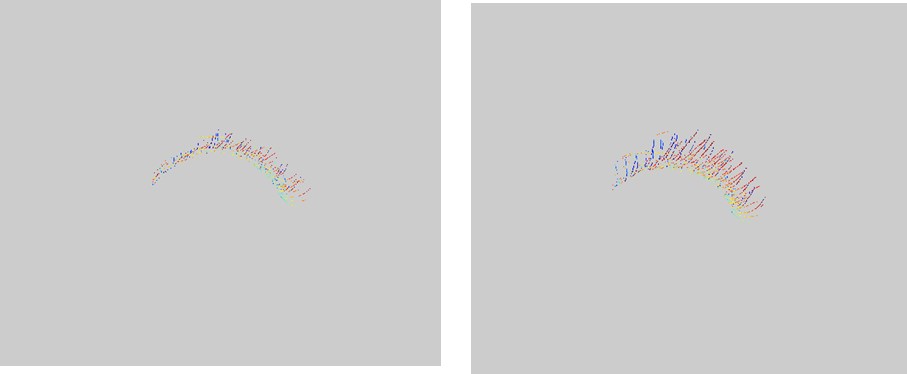Pixience know-how: an impressive image processing services
3 April 2024
Pixience offers image analysis services adapted to a variety of acquisition systems, in addition to the C-CUBE.
We provide color calibration services for your images, as well as specialized analyses such as eyelash or dark circles analysis. We’re here to meet your specific imaging needs, offering tailored solutions for your applications.
Color Calibration
We offer a post-acquisition image calibration service. The presence of our color test pattern in each image is essential to ensure accurate color calibration. This process ensures accurate color reproduction, contributing to the quality and consistency of your study visuals.
Uncalibrated Calibrated

Eyelash analysis
We can measure the volume and length of the lashes on your image. This detection requires the placement of a region of interest (ROI), specifically the eyelashes of the lower eyelid or the hairs of the eyebrows. This is done manually by an expert operator. Next, we use a generic line detection algorithm to detect eyelashes in our region of interest.
Volume

Automatic segmentation isolates the lashes from the skin and eye. The larger the area detected, the thicker or tighter the eyelashes. In both cases, this implies a larger volume of lashes.
Length
The lashes detected should have an even thickness. Therefore, the amount of eyelashes detected is related to the number of eyelashes or their length. Assuming a constant number of eyelashes before and after a treatment, any difference observed between the 2 times can be directly equated with a variation in their length.
Dark circles analysis
A dark circles is a variation in the color of the skin under the eye. Dark circles make the eyes look tired and aged. Many ranges of cosmetic products aim to treat dark circles by acting locally on the color of the skin.
Color Measurement
From standardized images of the face, it is possible to evaluate the effect of concealer treatments by analyzing the color of the skin. Measurements are made under the eye. A change in the average color, within the measurement area, indicates an effect. Two regions of interest of a specific shape are placed in the images, right in front of the volunteers’ eyes. The value provided is an average of all pixels in the two regions of interest.
It is also possible to place two ROIs, one under the eye and one on one cheek, to compare the results and determine the severity of dark circles.
Pigmentation index
The pigmentation index is correlated with the amount of melanin in the skin. This index is defined as the colorimetric distance with very dark reference skin, theoretically saturated with melanin. On non-standardized color clinical photos, this index is used to assess the evolution of the same volunteer. It cannot be compared between volunteers.

Placement of ROI under the eyes to analyze dark circles
Image analysis from a face box
We can also perform analyses on images from your face camera. We offer the following analyses:
- Erythema Index (Minimum, Maximum, Medium)
- Pigmentation index (minimum, maximum, medium)
- Analysis of black spots (porphyrin, severity classified according to the intensity of the florescence)
- Color homogeneity (variance)
- Erythema homogeneity (variance)
- Pigmentation homogeneity (variance)
Pixience is committed to designing innovative solutions to support you in your clinical studies.
CONTACT
Pixience
Sebastien Mangeruca
CEO
https://pixience.com/c-cube-cr/?lang=en







 Follow us on Linkedin!
Follow us on Linkedin!
You must be logged in to post a comment.